Sussex artefacts
Celebrate 60 years of Sussex with the stories behind some of our notable artefacts.
Coat of arms
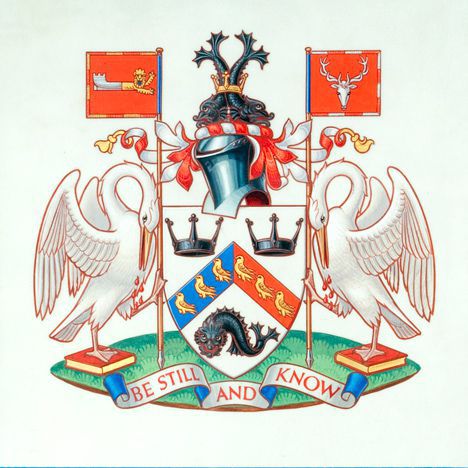
The coat or arms, or crest, was officially granted on 15 March 1962. It was designed by Dr Anthony Wagner, who was Richmond Herald of Arms at the College of Arms, responsible for heraldic matters.
The crest incorporates elements of the counties of East and West Sussex, and Brighton. The six martlets on the gules and azure chevron are taken from the arms of East Sussex and West Sussex, as are the 'Saxon Crowns' for the Kingdom of the South Saxons. The dolphin is taken from the arms of Brighton.
The two pelicans, symbolising piety, carry banners showing the Cinque Ports lion and a ship symbol for Hastings. They are standing on books to represent learning, while the motto ‘Be still, and know…’ is from Psalm 46, which forms a regular part of Jewish, Catholic, Lutheran, Anglican and other Protestant liturgies
Ceremonial chair
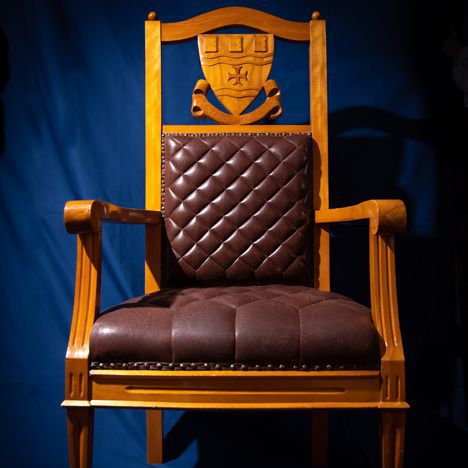
The ceremonial chair, sat in by the Chancellor at graduation ceremonies, is made from Newfoundland birch and sealskin and was a gift from the Memorial University of Newfoundland in 1962.
It made its first outing in 1963 [PDF] for installation of the University’s first Chancellor, Viscount Monckton of Benchley. The ceremony, at St Peter’s Church in Brighton, included a number of honorary degrees being presented. Recipients included the then UK Prime Minister Harold Macmillan and Earl Mountbatten, Admiral of the Fleet.
When not in use, the chair is stored in strong room on campus, protected by a padded cover.
Mace
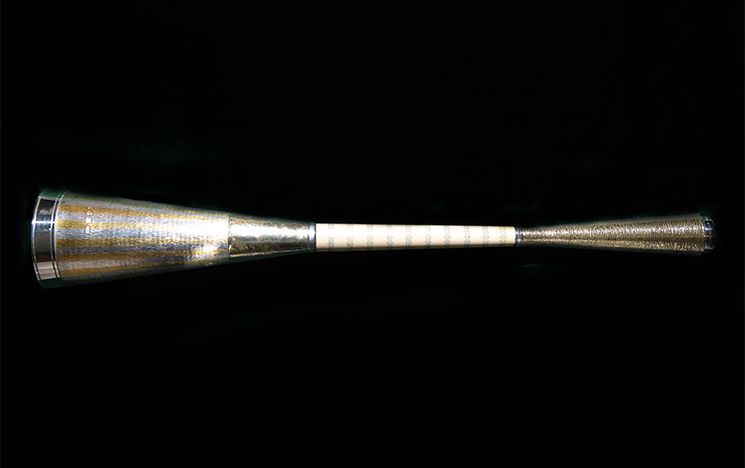
Sussex’s ceremonial mace is carried by the mace bearer at the front of every graduation academic procession and is a physical representation of the authority of the institution.
It was designed by Gerald Benney, a well-known silversmith in the early 1960s, whose Scandi-inspired style fitted the look and feel of the new university. Benney, whose father Ernest was Principal of Brighton College of Art, was the first British craftsperson to hold four Royal warrants at the same time.
The silver mace was paid for by the county councils of East and West Sussex with a budget of £750. They requested that it be contemporary in design, rather than ‘municipal’. While less decorative than a traditional mace, its tip incorporates the University’s coat of arms.
Graduation gown
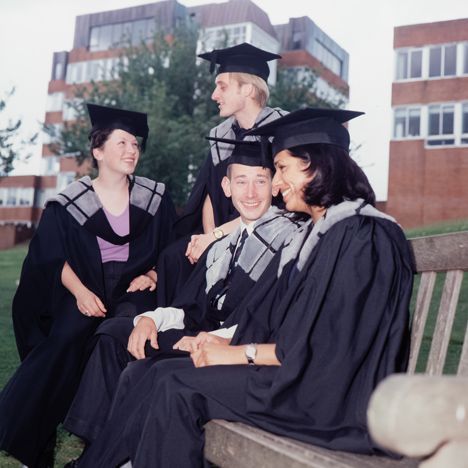
For the first graduation in 1964, undergraduates’ gowns had hoods with grey nylon fur lining and silk strips of different colours denoting their academic schools. Masters’ gowns with grey silk lining were also introduced.
The chosen styles did not win everyone’s approval. In 1967, George Wenham Shaw, an expert in academic dress and a teacher at Lancing College, wrote to the University’s Vice-Chancellor to complain that the original design was ‘lacking in dignity’, denouncing the yellow and green doctoral robes as ‘a pantomime outfit’. However, he was relieved that doctors were no longer required to wear bowler hats.
The styles were modified in 1967, although the grey fur remained until 2010, when it was replaced with red silk. New doctoral robes, of red with blue hood and trim, were also introduced in 2010.
Visitors' book
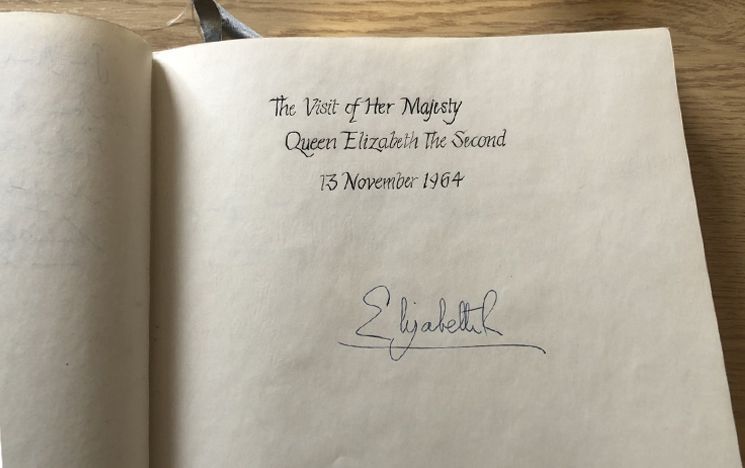
A host of distinguished visitors to the University – from royalty, to world leaders, to cultural icons - have signed our visitors’ book in the past 60 years.
They include Her Majesty The Queen, who scribed ‘Elizabeth R’ after opening the Library in 1964, while her husband also obliged when visiting the University in 1966 and 2001, signing himself simply as ‘Philip’.
Celebrity signatures include those of Noël Coward in 1972 (when he received an honorary degree) alongside Sheila, Michael and Richard Attenborough; and composer William Walton in 1968.
From the world of politics, we have the autographs of Shirley Williams in 1978 (when she was Secretary of State for Education and Science), Jack Ashley in 1974, and Sussex alum Hilary Benn MP for Leeds Central, who commented: “It’s great to be back.”
Reginald Phillips plaque
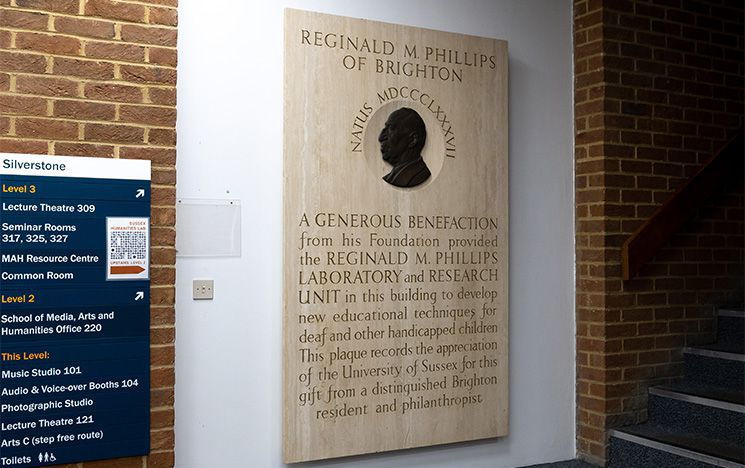
A large marble plaque in Silverstone building is dedicated to Reginald Moses Phillips CBE Hon LLD (1888-1977), a Brighton businessman and philanthropist whose generous gifts to the University have supported science research, including the creation of the Science Policy Research Unit (SPRU).
Phillips established the RM Phillips Charitable Foundation and, upon his death, gave his entire estate to the University. The Foundation has helped to buy science equipment essential for research into new treatments and therapies for diseases such as cancer and Alzheimer’s.
The plaque, which incorporates a bronze profile and was made by Michael Rizzello, was created in Phillips’ honour following the establishment of a unit to develop new educational techniques for children with disabilities. The RM Phillips Research Network continues to pioneer studies in this area.
Basil Spence furniture
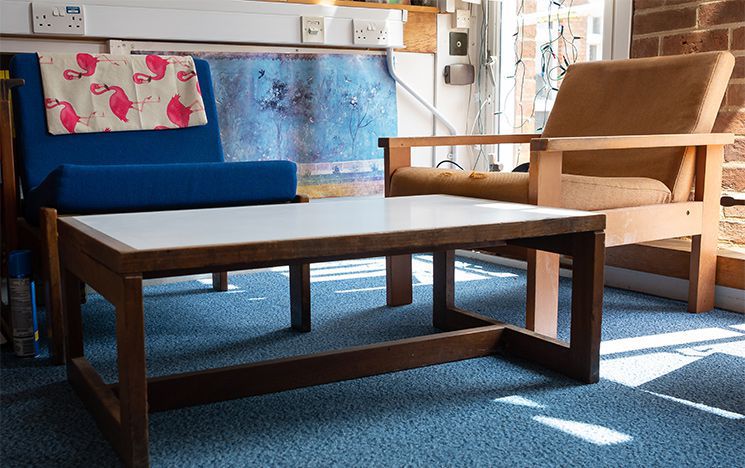
Architect Sir Basil Spence not only created the external look of campus – he also designed much of the furniture for the interiors.
They include stacking chairs for the Library, made from teak with black vinyl seats. While these have been replaced with comfier versions for long periods of study, the originals can still be found in some part of the University, such as in the stylish ACCA café.
For a softer landing, Spence also designed low chairs with fabric-covered cushions, many of which have been lovingly looked after and restored by Sussex’s community and can still be found in various offices around campus.
Library key
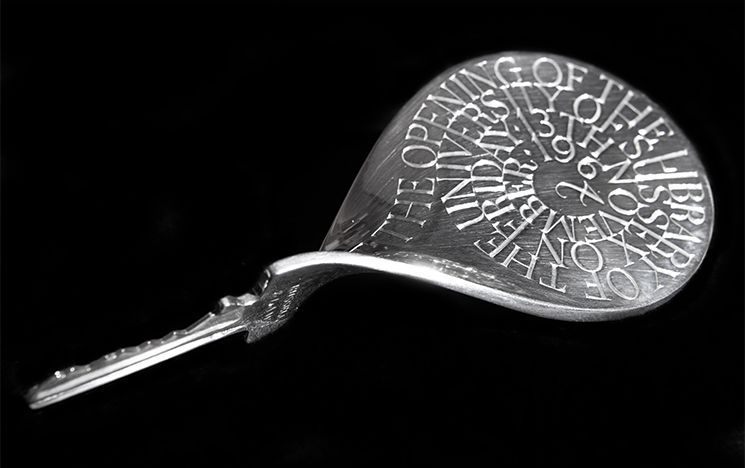
A silver key was crafted especially for the Queen to officially open the Library on 13 November 1964.
It was presented to Her Majesty by the University’s architect, Sir Basil Spence, who then took her on a tour of the state-of-the-art building, accompanied by (among others) the Secretary of State for Education Michael Stewart, the University’s Librarian Dennis Cox, and Dame Flora Robson – a member of the University’s Council, renowned actress and a Brighton resident.
Now, with its Grade II status, the Library continues to be revered as architecturally significant. Over the years the building has been expanded and refurbished. Although much of its content is now digitally accessible, it remains central to Spence’s vision as “a storehouse of knowledge”.
Sussex House flagpole
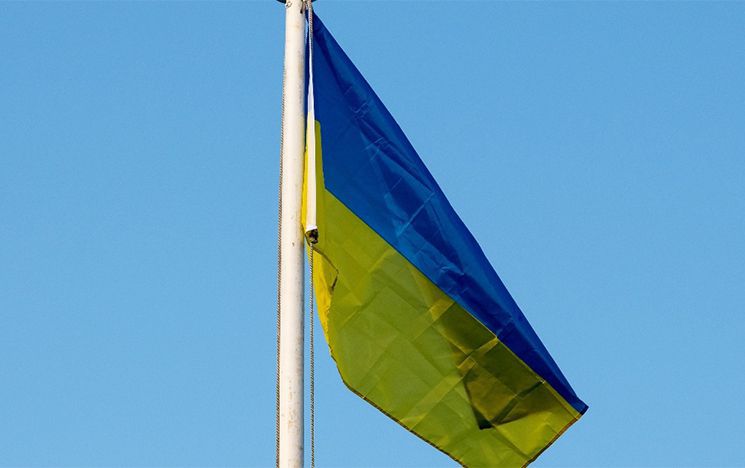
Whenever appropriate, the University of Sussex shows its support for communities and countries by hoisting a flag up the flagpole of Sussex House.
With inclusion as one of the University’s core values and central to our Inclusive Sussex strategy, among the many flags unfurled are those that support our LGBT+, transgender and disabled communities.
We have also flown national flags, such as Ukraine’s, which we did in recognition of those affected by the Russian military action in February 2022. This coincided with the launch of a fundraising appeal for our Ukrainian students.
The Sussex Mug
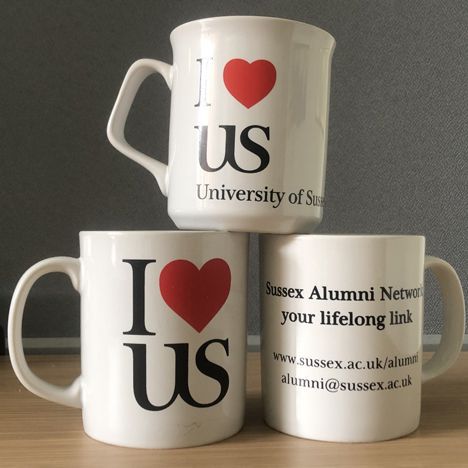
A common refrain for all those associated with our great University is: “I love Sussex.” So we put it on a mug. Now countless homes across the land – if not the world – have these iconic items in their cupboards.
The mugs were created by our Development and Alumni Relations Office as part of their annual offering of memorabilia. In addition to a declaration of love, they carry reminders of our Alumni pages and email address to encourage all our graduates to stay in touch with us.
The team also produces Falmer magazine for alumni, which is filled with stories about current and past students and members of staff, and news about the University’s research and campus developments.